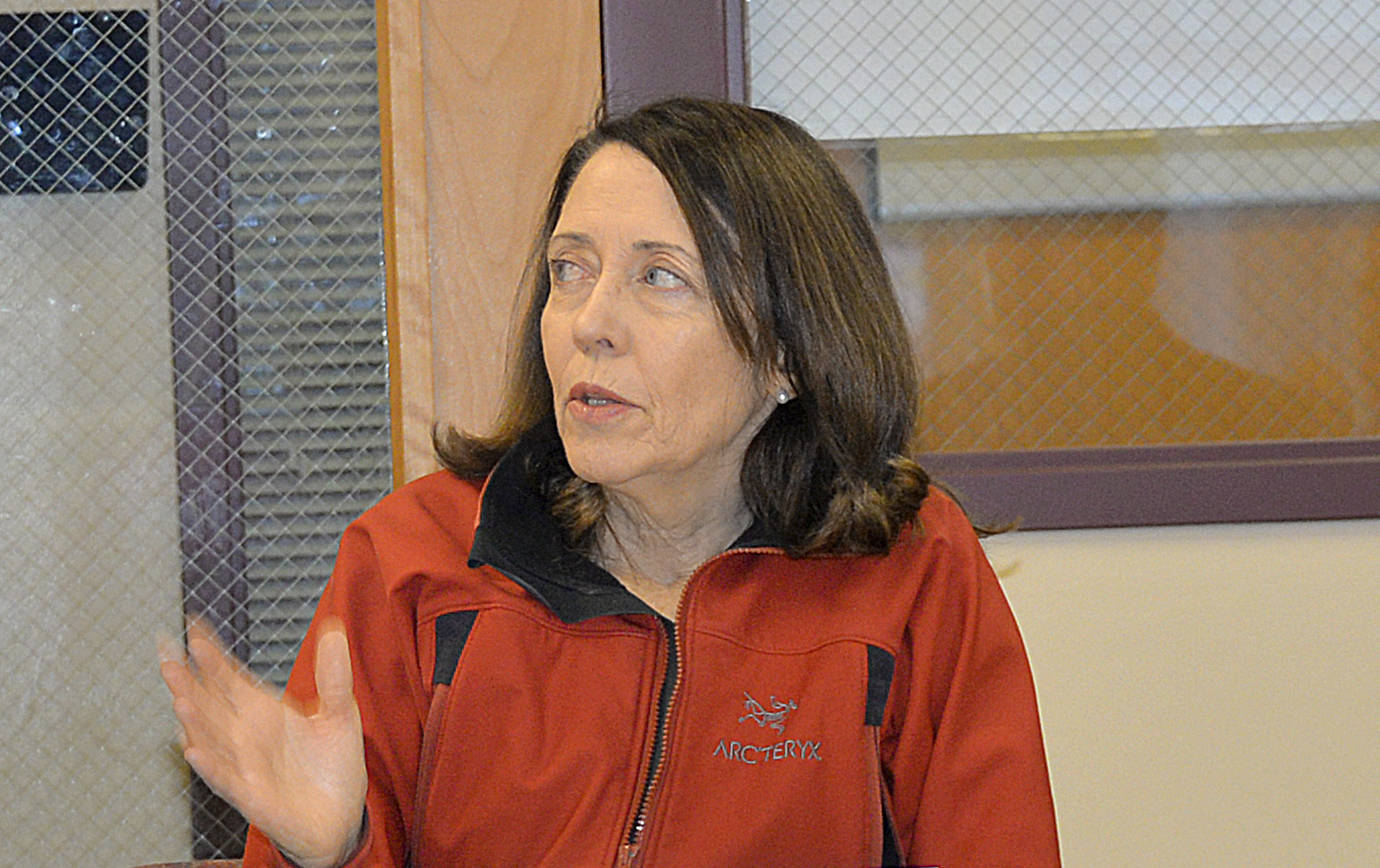Sen. Maria Cantwell, in Aberdeen Monday to campaign and meet with public officials on various issues, sat down with law enforcement, public health officials and treatment professionals at the Sea Mar Aberdeen Medical Clinic to get their take on the opioid epidemic.
Cantwell spoke about the Support for Patients and Communities Act, signed into law by President Trump Oct. 24, and said she wanted “to hear about the problems unique to Grays Harbor County.”
The Act has several provisions Cantwell authored, one of which is designed to hold drug manufacturers accountable for failing to report suspicious orders of opioids or maintaining effective control against negligent distribution.
“It allows law enforcement to track physicians who may be prescribing too much,” said Cantwell. It also increases the penalties for failing to properly track opioid distribution from a few thousand dollars into the millions, she said.
The legislation also includes $46 million in annual federal funds to provide overdose response training, funds drug courts and expands medically-assistant treatment coverage, she said.
Grays Harbor County
Aberdeen Police Chief Steve Shumate and Grays Harbor County Sheriff Rick Scott said Aberdeen is the “hub” of much of the drug distribution activity on the entire Olympic Peninsula. “A lot of heroin comes through here,” said Scott, who noted the county’s drug task force is the smallest in the state, yet handles one of the largest caseloads. “Sometimes it’s like trying to hold the tide back with a shovel,” he said.
Scott has recently instituted a medication-assisted opioid treatment program in the county jail. He said about 90 percent of the jail population has some form of addiction. Scott said the on-site treatment program has already proven effective in decreasing the number of inmates returning for drug-related offenses.
Sea Mar clinic manager Audra Lutz told Cantwell the cycle of opioid addiction often begins with injuries that cause lingering pain, common to an area that employs so many in the timber and fishing industries.
“We need to make sure we are not putting patients on medication that starts them on the cycle of addiction,” Lutz said.
Chris Watras, medication assisted treatment program manager for Sea Mar, told Cantwell Sea Mar has done trials that show how cost-effective, and just plain effective, outpatient medication assisted treatment can be. He talked about alternative forms of pain management. “There are better treatments for chronic and acute pain than opioids,” he said, adding additional resources could be used to expand these treatments to other providers in the region.
Cantwell said providing her with a dollar amount, a specific number that shows how spending money ahead of the problem can be more cost-effective, would help her negotiate funds for such programs in the Senate.
The discussion included the aspect of mental health and its relationship with addiction, especially the difficulty of determining which caused what; did the addiction cause the mental illness, or did the mental illness result in the addiction? Scott said there are certain repeat offenders he’s known for years who, when younger, were addicted to meth or some other drug and displayed no signs of mental illness. Years later, they do.
“We can’t separate mental health and addiction,” said Karolyn Holder, Grays Harbor Public Health and Social Services director. She added the county has the highest overdose rate in the state.
Housing is another issue. Many on the panel described how a person may get treatment, then have nowhere to go afterward except for right back into the environment that supported their addiction in the first place.
Lack of medical providers in the area, transportation issues and the overall depressed economy of the region all feed into the area’s cycle of addiction, according to the panel. Cantwell left saying she recognized the need for integrated services — mental health, primary care and other providers in one central location — “and I need to get back and look at the provider shortage in the area” to find ways to get more funding for areas like Grays Harbor County.



